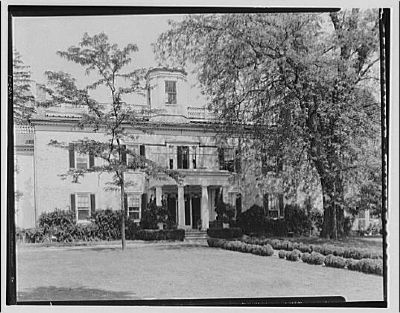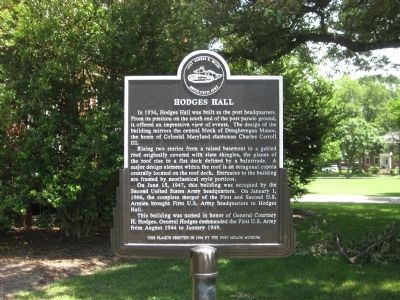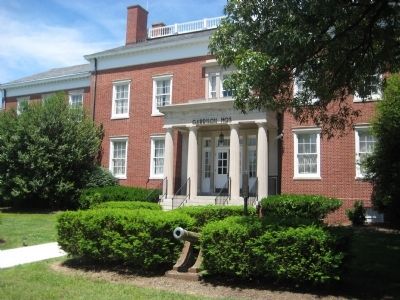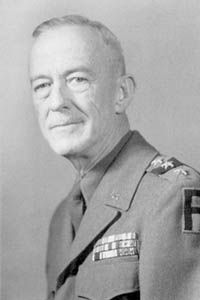Fort Meade in Anne Arundel County, Maryland — The American Northeast (Mid-Atlantic)
Hodges Hall
Fort George G. Meade
— United States Army —
Rising two stories from a raised basement to a gabled roof originally covered with slate shingles, the planes of the roof rise to a flat deck defined by a balustrade. A major design element within the roof is an octagonal cupola centrally located on the roof deck. Entrances to the building are framed by neoclassical style porticos.
On June 15, 1947, this building was occupied by the Second United States Army headquarters. On January 1, 1966, the complete merger of the First and Second U.S. Armies brought First U.S. Army headquarters to Hodges Hall.
This building named in honor of General Courtney H. Hodges. General Hodges commanded the First U.S. Army from August 1944 to January 1949.
This plaque erected in 1996 by the Fort Meade Museum.
Erected 1996 by Fort Meade Museum.
Topics. This historical marker is listed in these topic lists: Architecture • War, World II. A significant historical month for this entry is January 1939.
Location. 39° 5.823′ N, 76° 44.29′ W. Marker is in Fort Meade, Maryland, in Anne Arundel County. Marker is at the intersection of Llewellyn Avenue and Roberts Avenue, on the right when traveling west on Llewellyn Avenue. Touch for map. Marker is in this post office area: Fort George G Meade MD 20755, United States of America. Touch for directions.
Other nearby markers. At least 8 other markers are within walking distance of this marker. Maj. Gen. Ralph H. Van Deman (about 800 feet away, measured in a direct line); Post Hospital (approx. 0.2 miles away); 18th Century French Mortar (approx. ¼ mile away); White Oak (approx. ¼ mile away); Major General George G. Meade (approx. ¼ mile away); 29th Infantry Division, United States Army (approx. 0.3 miles away); Dedicated to all American Ex-Prisoners of War (approx. 0.3 miles away); The Battle of the Bulge (approx. 0.3 miles away). Touch for a list and map of all markers in Fort Meade.

Photographed By Theodor Horydzak, circa 1950
3. Doughoregan Manor
"The design of Hodges Hall mirrors the central block of Doughoregan Manor", the ancestral home of Charles Carroll of Carrollton, who was the last surviving signer of the Declaration of Independence. Photo credit: Library of Congress, Prints & Photographs Division, Theodor Horydczak Collection (LC-H824- 2407-001 )
Credits. This page was last revised on November 21, 2019. It was originally submitted on June 5, 2009, by F. Robby of Baltimore, Maryland. This page has been viewed 998 times since then and 11 times this year. Photos: 1, 2, 3, 4. submitted on June 5, 2009, by F. Robby of Baltimore, Maryland.


